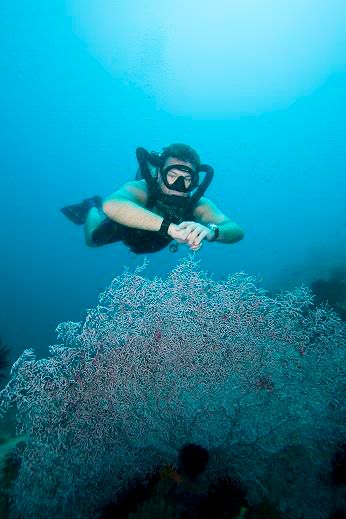I started diving in 1995 and took up photography in 2005.
The use of double hose regulators made perfects sense to me because, as DA Aquamaster puts it: -
I also like the double hose reg for photography as it diffuses the bubbles more and places them behind your head where they scare fish a lot less.
Before this, I was already using mechanical, oil filled depth gauges. The first one I got was a Voit AMF Swimmaster that I still use, scuffed to bits, but utterly reliable. These days it's a back-up to my computer, but I've twice had to rely on it when a computer went beserk, and at least 4 times, I've lent it to other people for the same reason.
I also do some tech diving, and for that, I have my Apeks regs, which are nice and shiny, but ask me which I prefer, and I'll point you to my Voit 50 Fathom or my Royal Aquamaster.
I started diving with (borrowed) Jetfins, and apart from buying my own, and - later - adding spring straps, nothing has changed there. I own a new pair of APS fins, but only because they are light and that makes a difference when I'm travelling.
If you can work out how to maintain your modern regs (and IMHO, any serious diver should at least know the basics - there's enough info online without even going to your LDS to be able to get this far), then you can do the same with your "vintace" equipment.
It's easier, too.
I was lucky enough to have some household names (among the SCUBA and tech diving community at least) as mentors, and on equipment they all agreed.
Less failure points = greater reliability.
Add this to decent maintenance and you're within your rights to say that the vintage equipment is in fact safer than modern equipment.
So far, touch wood, I've never had to be helped in any way when using my vintage equipment, but I've had to do the same for others with modern equipment on more than one occasion as a result of equipment failure.
Here's me, happy. (photo by Mike Veitch)




